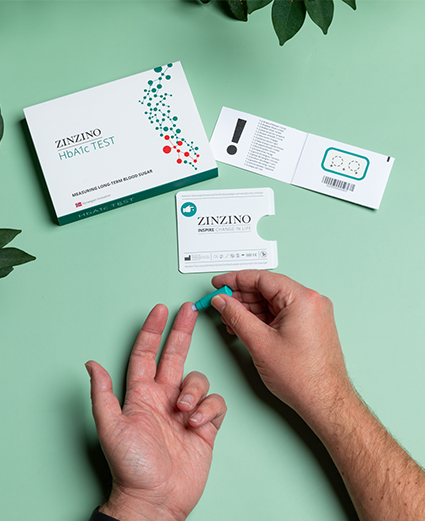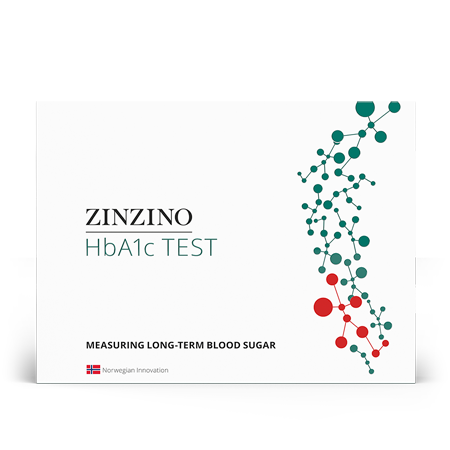Renate Scharnweber
Zinzino Independent Partner
Welcome! I'm your independent consultant, here to guide you on your health journey. Let me know what you need!
Keeping Normal Blood Sugar Levels for Better Health

Blood sugar health has become a critical public health issue worldwide, especially in the West. Diabetes has soared in the modern era, with over 6.3% of the world’s population, or 422 million people, suffering from diabetes today. This disease was exceedingly rare in the past. It was never hard to maintain normal blood sugar levels in pre-industrial society. After all, the human body evolved to maximize the energy and nutritional value of foods found in nature. Ironically, the post-industrialized global food economy has made food less nutritious, predictably far more abundant, calorically dense, and packed with sugars.
The Importance of Healthy Blood Sugar Levels
Blood sugar is always present as glucose’s primary role is to deliver energy to the cells. A normal blood sugar level is an HbA1c measurement of below 5.7% (39 mmol/mol) is considered normal levels. Above that is considered elevated HbA1c, and measurement above 6.5% (47 mmol/mol) is defined as diabetes. At those higher levels, glucose becomes toxic to multiple organs and physiological processes. Insulin is the hormone that the body releases to lower blood sugar levels, keeping glucose in check in healthy people. When our bodies can’t produce enough insulin, or our cells become resistant to insulin, blood sugar levels increase and stay high. Glucose also attacks the insulin-producing cells of the pancreas. Over time, that becomes a vicious cycle that accelerates the development of diabetes. Fortunately, it’s possible to prevent the triggering of this cycle, and there is hope for many to reverse prediabetes before it progresses into full diabetes.
Health Effects of Elevated Blood Sugar
Early signs and symptoms of elevated HbA1care fatigue, headache, mental fogginess, being thirsty or needing to urinate frequently. A keystone effect of high glucose’s long-term attack on the body is damage to the circulatory system. This vascular damage can lead to nerve damage, kidney failure, damage to the retina that can lead to blindness and non-healing foot injuries that can lead to amputation. For decades, high blood sugar has also been linked to heart disease, stroke and cognitive decline. People with high blood sugar have been found to have a significantly lower life expectancy1.
What Is a Normal A1c Level?
Normal blood sugar levels for non-diabetics is an HbA1c measurement between 4% and 5.6%. Each individual’s response to glucose is different based on their age and other factors. It’s important to keep in mind that HbA1c is an estimated average exposure to glucose and not a point-in-time measurement. Unlike blood glucose monitors and test strips that measure direct blood glucose at the time of the test, HbA1c measurement does not reflect the extremes of blood sugar fluctuation.
What Is a Dangerous Level of A1c?
Once a diabetes diagnosis is confirmed, the goal is to maintain a level below 7% (Below 50 mmol/mol). Above these values, elevated HbA1c can become dangerous, and lead to irreversible, life-threatening conditions over time. Severely elevated average blood glucose HbA1c of over 9% (75 mmol/mol) can lead to heart attack or stroke, blindness, kidney failure and amputations. Moreover, acute effects of very high blood sugar, such as diabetic ketoacidosis, are a clinical emergency and can lead to coma and death.
HbA1c Measurement
HbA1c measurement is an effective and accurate way of tracking blood glucose over time. Both lab tests and at-home tests measure glycated hemoglobin as a percentage of total hemoglobin in red blood cells. Sugar binds to hemoglobin, so over time it records how much sugar was present in the blood over a 2–3-month period. HbA1c can be measured in a lab from drawn blood ordered in a doctor’s office. But more and more people are taking ownership of their health and testing at home using a dried blood spot test. When done at home, testing empowers ordinary people with insight into how their bodies work and gives them the tools to realize healthy blood sugar levels and a healthier future.
Long Term/Average Blood Glucose A1c Levels Test
The advantage of the HbA1c test is the function of time, measuring the uptake of available blood glucose by hemoglobin as it is made. The length of time is determined by red blood cells that live for about 3 months. An averaging of blood sugar levels from single-point measurements taken over the same period would be costly and exhaustive. This is due to blood sugar levels fluctuating widely over the day, even in healthy people. A symphony of chemical signals goes to work to regulate glucose with the release of insulin after meals and at various times a day responding to the body’s circadian rhythms2. Measuring A1c does the averaging math for us and has the distinct advantage of being a long-term average of blood sugar levels.

The Zinzino HbA1c Test
What makes the Zinzino HbA1c Test different from others is its novel approach integrating a lifestyle questionnaire with laboratory testing data. Vitas Analytical Services A/S is our laboratory provider for Zinzino’s H1bA1c dried blood spot test. It is one of the world’s leaders in quality laboratory services and they produce and process the test based on our exacting specifications. Zinzino then contextualizes lab data with a comprehensive lifestyle assessment. The end product is a report with personal recommendations on diet, supplementation, exercise and physical activity. Our holistic approach to HbA1c testing gives you the information to assess and take control of your health destiny.
1. Hyperglycemia in diabetes
“Hyperglycemia in diabetes.” Mayo Clinic https://www.mayoclinic.org/diseases-conditions/hyperglycemia/symptoms-causes/syc-20373631 Accessed 31 July 2022
2. Mason IC, Qian J,
Mason IC, Qian J, Adler GK, Scheer F. 2020 Impact of circadian disruption on glucose metabolism: implications for type 2 diabetes. Diabetologia volume 63, pages 462–472 (2020) https://doi.org/10.1007/s00125-019-05059-6


Share this page
Or copy link